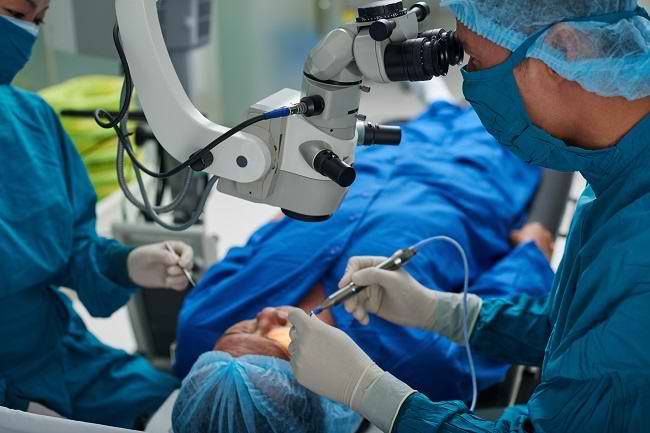Ovarian cysts are generally benign. However, in some conditions, benign ovarian cysts can have the potential to become malignant or cancerous ovarian cysts. If detected late and not treated quickly, ovarian cysts can get worse and become ovarian cancer.
An ovarian cyst is a fluid-filled sac that grows on the ovary or ovaries. Most ovarian cysts are harmless and will go away on their own without special treatment.

Its presence is often asymptomatic and is only detected when the cyst is large, severe, or develops into a malignant tumor. Malignant ovarian cysts require prompt and appropriate medical treatment.
Various Symptoms of Ovarian Cysts
Symptoms of ovarian cysts are usually only felt when the cyst has enlarged, ruptured, or interferes with blood flow to the ovary. In some cases, ovarian cysts can cause symptoms such as:
- Bloated
- Frequent urination
- Menstrual cycle changes
- Weak
- Pain when defecating
- Pelvic pain
- Pain or soreness during sexual intercourse
Symptoms of benign and malignant ovarian cysts are often difficult to distinguish because they can be similar. However, if you experience the above symptoms accompanied by other symptoms, such as weight loss, fever, swollen feet, and shortness of breath, you should immediately consult a doctor.
In addition, the risk of developing malignant or cancerous ovarian cysts is also higher in postmenopausal women. However, do not rule out the possibility of malignant ovarian cysts can also occur in young women.
Types of Ovarian Cysts
About 70 percent of ovarian cysts are benign and only about 6 percent of ovarian cysts are malignant and contain cancer cells. The following are some types of cysts and their explanations:
Functional cyst
Functional cysts are the most common type of ovarian cyst in women, especially during the menstrual cycle. Functional cysts are divided into two types, namely follicular cysts and corpus luteum cysts.
In general, this type of cyst is painless and will disappear on its own in a few months without the need for special treatment.
benign cyst
There are various types of benign ovarian cysts, including:
- Dermoid cysts, which are cysts that contain body tissue, such as hair, skin, or teeth, and rarely develop into cancer.
- Cystadenoma cysts, which are cysts that arise from the surface of the ovaries and have the potential to contain cancer cells.
- Endometrioma cysts, which are cysts caused by endometriosis and in certain cases, these cysts can develop into cancer cells.
Any benign cyst actually has the potential to develop into ovarian cancer. Therefore, cysts are generally removed surgically or monitored regularly because some can go away on their own without medical treatment.
Malignant cyst
Malignant ovarian cysts contain cancer cells that can cause ovarian cancer. In general, malignant ovarian cysts come from benign cysts that have grown too long, so that they turn malignant because of late treatment.
How to Detect Benign or Malignant Ovarian Cysts
To detect whether you have a benign or malignant ovarian cyst, your doctor will perform several tests. In diagnosing ovarian cysts and determining the type, the doctor may perform a physical examination accompanied by supporting examinations, such as:
blood test
Doctors may perform blood tests to look for the CA-125 protein, which is a marker for certain cancers, including ovarian cancer. CA-125 levels in patients with ovarian cancer are generally high. However, this cannot be the only benchmark.
Women's CA-125 levels may also increase when they are menstruating, pregnant, or suffering from certain conditions, such as pelvic inflammatory disease and endometriosis.
Ultrasound (USG)
Ultrasound examination can be done to detect the type, shape, size, and location of ovarian cysts. This examination can also be done when the doctor wants to do other tests, such as a biopsy.
Biopsy
A biopsy is a procedure of taking a sample of tissue from a part of the body for further examination under a microscope. Through this examination, the doctor can assess and determine whether the cyst or abnormality that appears is benign or malignant.
Laparoscopy
Sometimes, doctors perform a laparoscopic surgical procedure to remove one of the ovarian tissue and check for signs of cancer in the ovary.
Not all ovarian cysts can be malignant, but you are still advised to have a medical check-up with a doctor if you experience symptoms of ovarian cysts.
This is important so that the doctor can ensure that the cyst is benign and does not have the potential to become malignant. If the results of the doctor's examination show that the cysts found are malignant, you can get treatment as soon as possible, so that the chances of healing will be greater.









